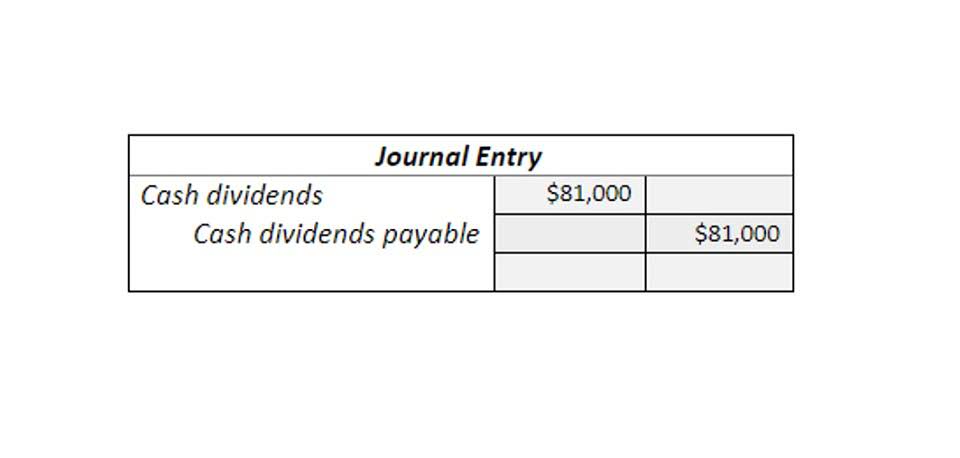
Based on the contribution margin formula, there are two ways for a company to increase its contribution margins; They can find ways to increase revenues, or they can reduce their variable costs. A key characteristic of the contribution margin is that it remains fixed on a per unit basis irrespective of the number of units manufactured or sold. On the other hand, the net profit per unit may increase/decrease non-linearly with the number of units sold as it includes the fixed costs. The contribution margin is computed as the selling price per unit, minus the variable cost per unit.
Analysis and Interpretation
- CFI is on a mission to enable anyone to be a great financial analyst and have a great career path.
- Say, your business manufactures 100 units of umbrellas incurring a total variable cost of $500.
- As mentioned above, the contribution margin is nothing but the sales revenue minus total variable costs.
- The best contribution margin is 100%, so the closer the contribution margin is to 100%, the better.
Where C is the contribution margin, R is the total revenue, and V represents variable costs. Net sales are basically total sales less any returns or allowances. This is the net amount that the company expects to receive from its total sales. Some income statements report net sales as the only sales figure, while others actually report total sales and make deductions for returns and allowances.

Fixed Costs vs. Variable Costs
Variable costs are not typically reported on general purpose financial statements as a separate category. Thus, you will need to scan the income statement for variable costs and tally the list. Some companies do issue contribution margin income statements that split variable cm ratio and fixed costs, but this isn’t common.
Operating Profit or Loss
You need to calculate the contribution margin to understand whether your business can cover its fixed cost. Also, it is https://www.bookstime.com/articles/direct-write-off-method important to calculate the contribution margin to know the price at which you need to sell your goods and services to earn profits. Furthermore, a higher contribution margin ratio means higher profits.

Contribution Margin Formula

The break-even point in units is calculated by dividing total fixed costs by the contribution margin per unit. For example, if fixed costs are $10,000 and the contribution margin per unit is $40, 250 units must be sold to break even. This insight helps businesses set realistic sales targets balance sheet and evaluate how changes in costs or strategies impact profitability. Once you have calculated the total variable cost, the next step is to calculate the contribution margin.
- Sales revenue refers to the total income your business generates as a result of selling goods or services.
- Accurate reporting of these costs ensures compliance with accounting standards like GAAP or IFRS.
- Thus, the concept of contribution margin is used to determine the minimum price at which you should sell your goods or services to cover its costs.
- Conversely, a lower ratio might require maintaining or increasing prices to preserve margins.
- In 2022, the product generated $1 billion in revenue, with 20 million units sold, alongside $400 million in variable costs.

The ratio can help businesses choose a pricing strategy that makes sure sales cover variable costs, with enough left over to contribute to both fixed expenses and profits. It can also be an invaluable tool for deciding which products may have the highest profitability, particularly when those products use equivalent resources. In general, the higher the contribution margin ratio, the better, with negative numbers indicating a loss on every unit produced. Understanding financial metrics is crucial for businesses aiming to optimize profitability and make informed decisions. One such metric, the contribution margin ratio, evaluates how sales impact overall profit.
Total Cost
Furthermore, it also gives you an understanding of the amount of profit you can generate after covering your fixed cost. Such an analysis would help you to undertake better decisions regarding where and how to sell your products. The concept of contribution margin is applicable at various levels of manufacturing, business segments, and products.

However, you need to fill in the forecasted units of goods to be sold in a specific future period. This is if you need to evaluate your company’s future performance. In the Dobson Books Company example, the contribution margin for selling $200,000 worth of books was $120,000. As you can see, the contribution margin per-unit remains the same. Remember, that the contribution margin remains unchanged on a per-unit basis.
- As you can see, the net profit has increased from $1.50 to $6.50 when the packets sold increased from 1000 to 2000.
- You need to fill in the following inputs to calculate the contribution margin using this calculator.
- The contribution margin ratio measures the percentage of sales revenue available to cover fixed costs and contribute to profit.
- As you can see, the contribution margin per-unit remains the same.
- It is often used for building a break-even analysis, which helps companies determine at what point a new business project will reach enough sales to cover the costs.
- Learn financial statement modeling, DCF, M&A, LBO, Comps and Excel shortcuts.
This concept is especially helpful to management in calculating the breakeven point for a department or a product line. Management uses this metric to understand what price they are able to charge for a product without losing money as production increases and scale continues. It also helps management understand which products and operations are profitable and which lines or departments need to be discontinued or closed. That is, fixed costs remain unaffected even if there is no production during a particular period. Fixed costs are used in the break even analysis to determine the price and the level of production. On the other hand, variable costs are costs that depend on the amount of goods and services a business produces.



Leave a Reply